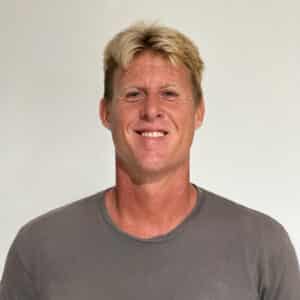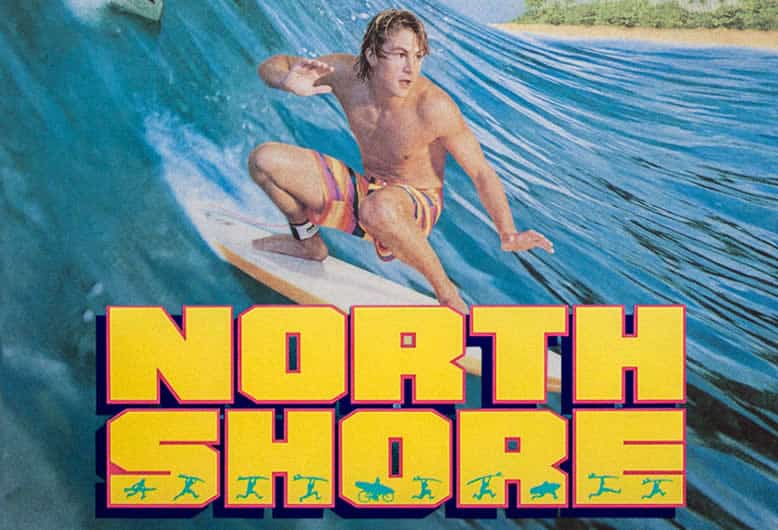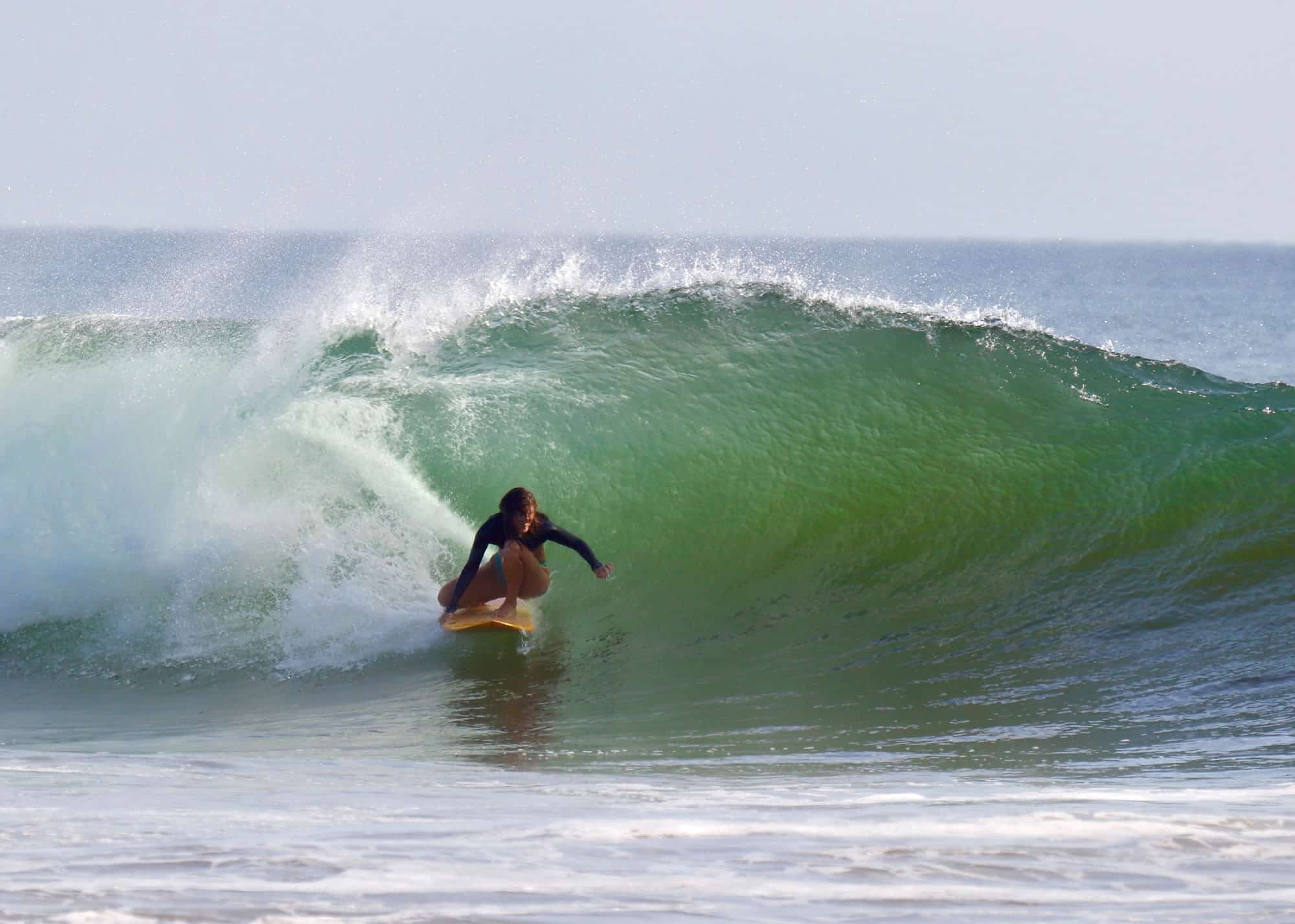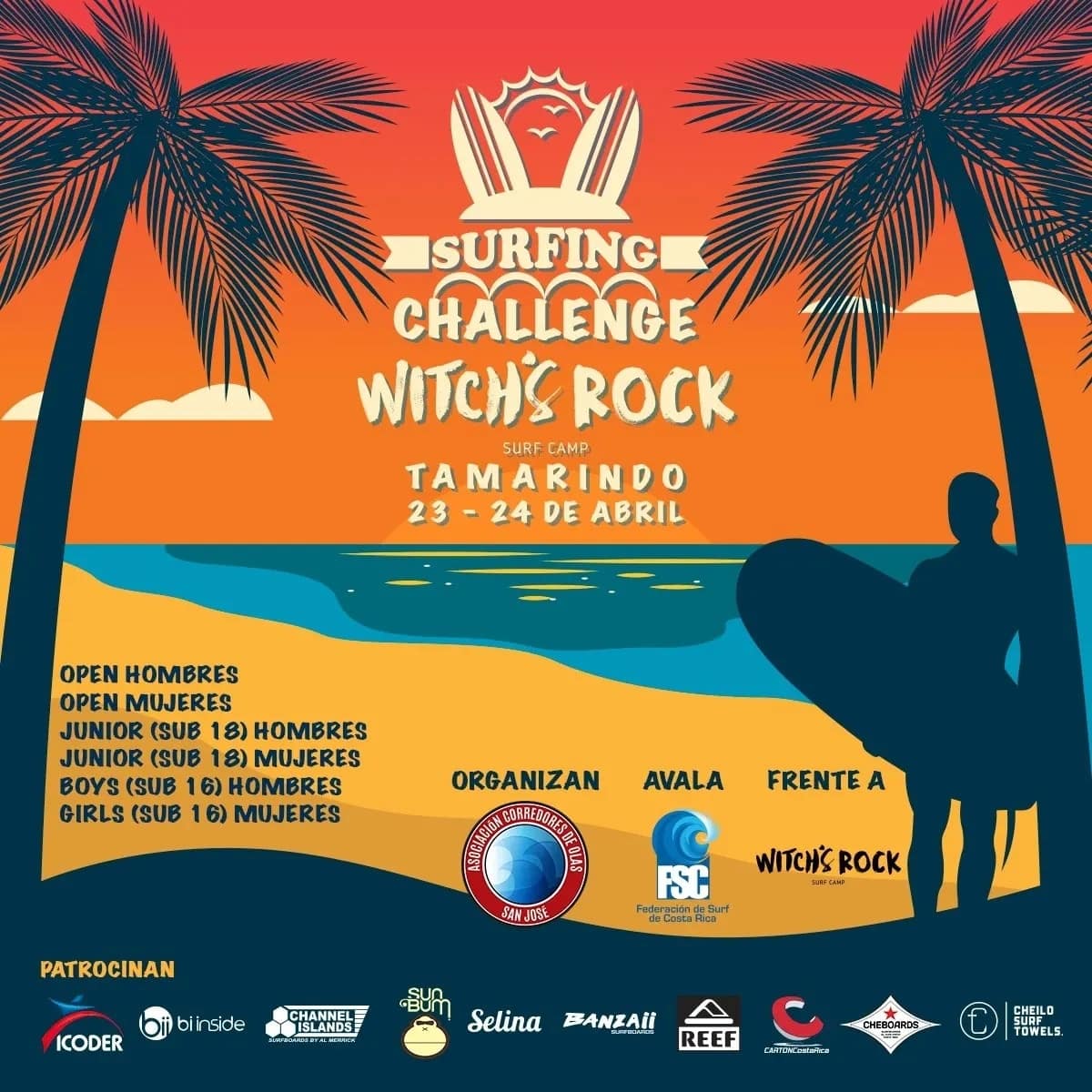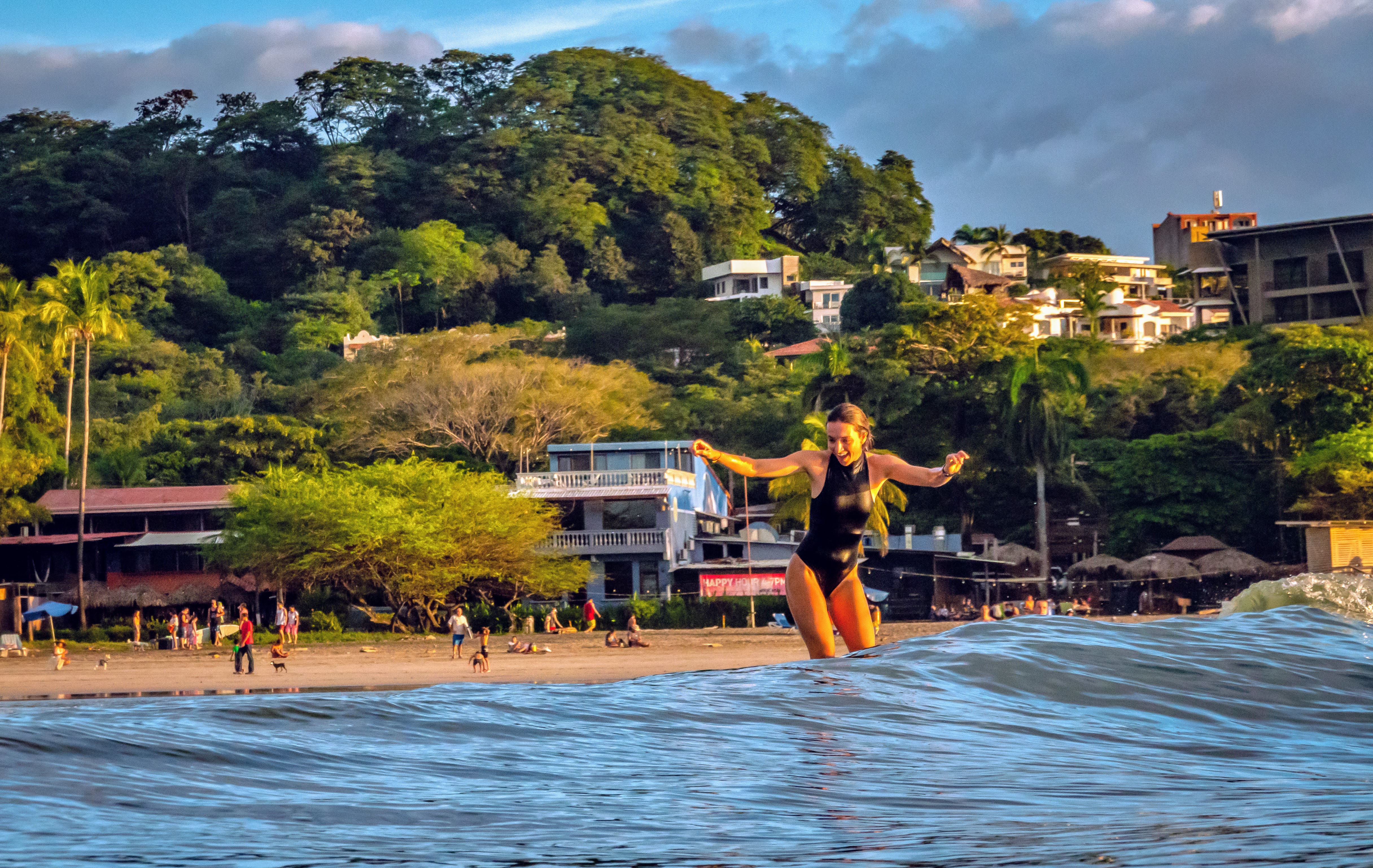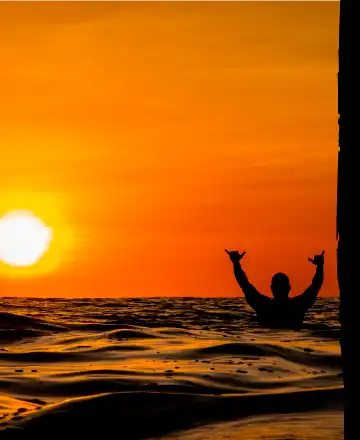Like all sports, surfing has a learning curve, and we want to help you accelerate your progress. Whether you’ve learned to surf here in Tamarindo, or are coming to WRSC to improve your surfing, we have compiled a list of things for you to keep in mind while you are out in the water. With these tools, you should be able to catch and ride your fair share of waves in Tamarindo and maybe even drop down a board size or two! So dive in and enjoy!
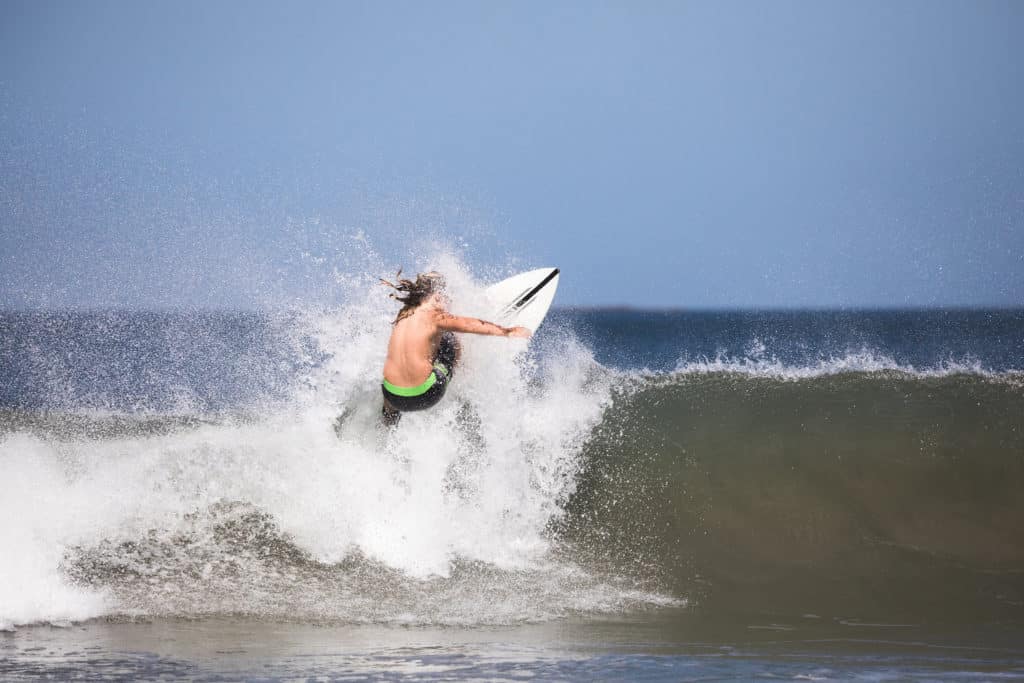
1. Grabbing your rails during your pop up
This is probably the most common mistake new surfers make when popping up. For stability, the surfer will attempt to grab the sides of the board (the rails), which will actually cause the board to become unstable due to uneven weight distribution. Instead, place your hands just below your shoulders with flat palms on the board and push up. This will provide a stable surface to push off from, while distributing your weight evenly. Think push up position.
2. Using your knees to pop up
Another common mishap many new surfers suffer through and often get away with, is using their knee (or knees) to pop up. This might work on beginner boards, but it is a bad habit that should be avoided at all costs. If you plan on trying new board types, or riding a short board eventually, you’ll want to keep your knees out of your pop up. Instead, try one of two things. 1. Jump to your feet with the support of your hands so that your not using your knees to get up. Or 2. Bring your back foot up to your knee, and press up on three points (two hands and back foot), while bringing your front foot forward. Many surfers with tight lower backs often resort to the knee pop up, so try stretching before and after surf sessions for a good long term fix.
3. Catching the wave after it breaks
White water is great for learning, but as we advance we want to begin to ride the “green wave” not the wash after the wave breaks. To do this, sit further out in the line up. The bigger your board, the earlier you can get into a wave. Try to paddle for, and catch, sections of swell that wobble as if they are about to overflow. Once you catch the wave, give one hard extra paddle for good measure, hop to your feet, and turn to ride down the line.
4. Not putting your head down as you make your final paddle into a wave
This mistake applies mostly to new short board riders, but can be made with any board. Catching a wave, and riding a wave effectively, is all about distribution of weight. When you first begin to paddle for a wave, your head is most likely up facing the beach, which is all good and dandy. That is, until the wave starts to pick you up. When your head is up while you paddle your weight is towards the back of the board. This can cause waves to roll under you, instead of you catching them, which is incredibly frustrating. To remedy this issue, as the wave begins to pick you up put your head down and paddle hard. Facing your board, rather than the beach, will put extra weight on the nose of your board and push you down into the wave.
5. Not shifting your weight as you ride
Similarly to the issue above, if you don’t shift your weight as you ride, the wave will simply pass underneath your feet. The best way to understand proper weight distribution is to watch a skilled longboarder. They gracefully cross step up the board to go faster and step back to slow down. The whole concept is aimed at staying just in front of the breaking part of the wave. On a short board, riders will only ride ever so slightly forward on their board, but they do so with their weight over their front foot, pumping up and down the face of the wave to generate speed. When a shortboarder wants to slow down to pause in a barrel or make a turn, they put their weight on back foot. Now you don’t have to be a cross stepping longboard extraordinaire or a skilled short board rider to do this. If your on a longboard, simply walk the board to get to the front and back. If you are on a short board, practice putting your inside rail into the face of the wave and then letting off to generate speed.

